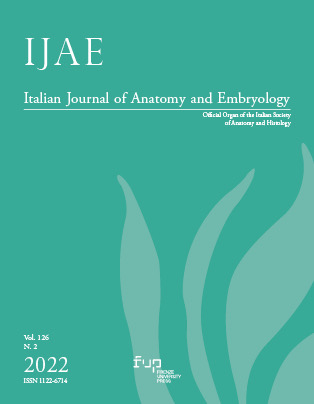Published 2022-12-27
Keywords
- cavernous body of the penis,
- corpus spongiosum,
- urethra,
- cellular theory
How to Cite
Abstract
Penile structure and function aroused interest since ancient times, when the erectile activity was mainly attributed to an accumulation of air by Greek and Roman physicians. In the Renaissance period Leonardo da Vinci was one of the first to recognize the right functional importance of the presence of blood in penile tissues. Since then, although with different techniques and interpretations, the morphological studies reported the description of blood vessels differently arranged in complicated networks. The discovery of blood circulation by William Harvey in his famous Exercitatio anatomica de motu cordis (1628) and the demonstration of capillaries by Marcello Malpighi stimulated a deeper research. In particular, the presence of a non vascular spongy tissue (cavernous bodies) with cellular texture (cellular theory) was postulated and interpreted as consisting of a loose and elastic spongy tissue arranged in several cells into which, during erection, blood is poured from the arteries, and from which it is afterwards removed by veins. In the beginning of the 19th century, when both vascular and cellular texture theories concerning the penile anatomy were still coexisting, a particular attention was paid to the urethral structure. Thanks to improved injection techniques, Paolo Mascagni and Alessandro Moreschi provided accurate works on this subject, demonstrating the vascular nature of the cavernous bodies. Finally, in 1899 Victor Vecki von Gyurkovechky confirmed the vascular theory, histologically demonstrated by the presence of endothelium.


